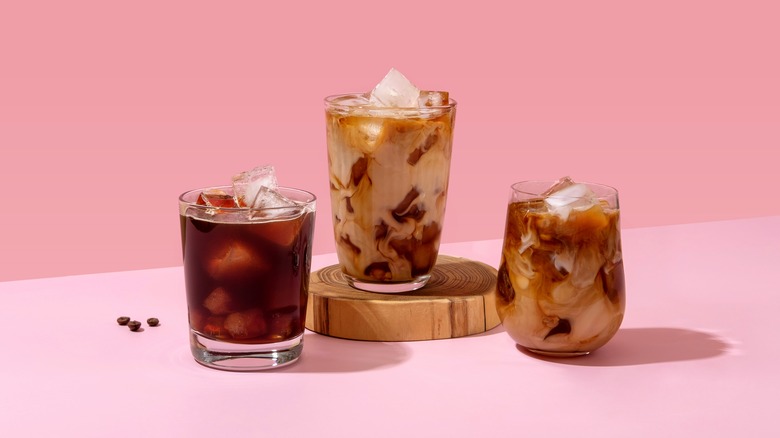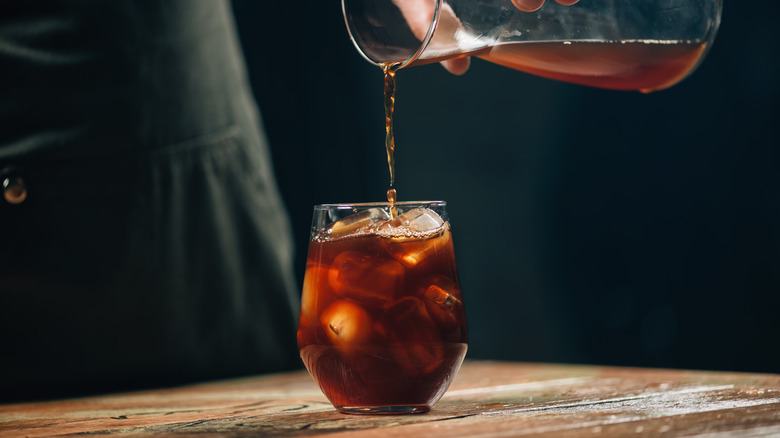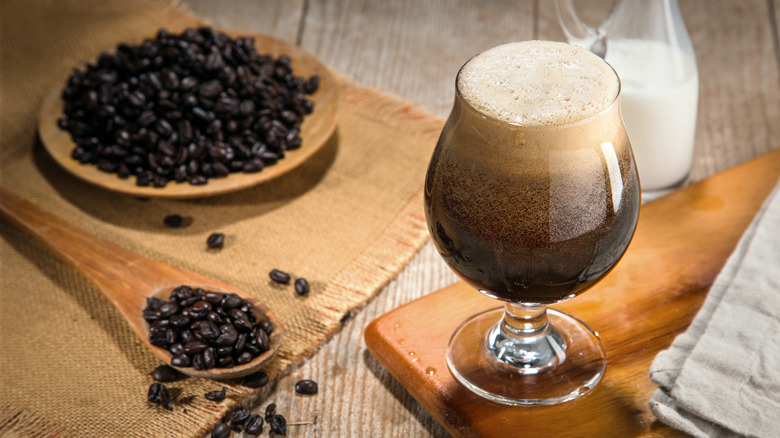Cold Brew Vs. Nitro Cold Brew: What's The Difference?
From creamer additions to seasonal favorites to what is suitable for different flavor profiles, coffee is a vast and ever-evolving field. Many people are loyal to their preferred go-to coffee order and see no reason to partake in what's en vogue. Others tend to be always searching to switch things up and find the ultimate cup of joe.
While once saved for summer, there seems to be a die-hard following of cold coffee drinkers year-round (via Smithsonian Magazine). Red fingers wrapped around an ice-filled plastic cup in the middle of February no longer garners a double-take glance as they once did. Cold coffee is here to stay, and with that comes different variations of the style.
Cold brew coffee is not just hot coffee over ice, it's an entirely different method of brewing the beans. And there is an iteration of it, nitro cold brew, quickly gaining in popularity and market share, per Grand View Research. What is the difference between cold brew and its nitro-infused brother?
Cold brew is steeped in cold water to create a low-acidic and mild flavor
Cold brew is essentially steeped ground coffee beans in cold water for up to 24 hours, served cold. Instead of using temperate as a base for extracting flavor and oils, it uses the extension of time. This method of brewing at a cold temperature inhibits the release of oils from the coffee beans, resulting in a brew concentrate much lower in acid, per Kaldi's Coffee.
According to Insider, this process makes cold brew easier on the stomach and more mellow and smooth on the tongue, unlike its hot counterpart. Once the concentrate is made, the level of caffeine and punch of flavor is in your hands — literally. It's typically made with a higher coffee-to-water ratio, but you can make it however you want. Just dilute the concentrate with water, and you can have more, less, or equal amounts of caffeine as a traditional hot cup of joe (via MasterClass).
Nitro cold brew has more body and is thicker in texture
Nitro cold brew is simply cold brew coffee plus a dose of nitrogen. The addition of nitrogen affects two aspects of the coffee — taste and purity. It acts as a preservative by bubbling and taking up space that oxygen would use, eliminating any chance of oxidation and alteration to the coffee's integrity, per Quivr. Those tiny bubbles also produce a frothy, thicker texture and more body to the brew. You can find these on tap from a keg at coffee shops or in the comfort of your kitchen, per Fluent in Coffee.
Just like nitrogen-less cold brew, it is much less acidic than regular coffee, making it a more suitable option for those with digestive issues, per Healthline. It is also typically higher in caffeine than regular coffee since it's made with more coffee grounds.
The main difference between cold brew and nitro cold brew comes down to the infusion of nitrogen which imparts a sweeter taste, smoother sensation, and "a thicker mouthfeel" (via Quivr).


